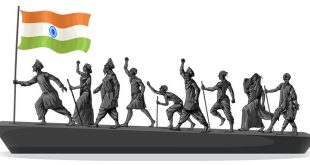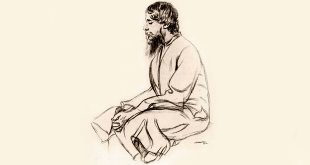एक युग था जब भारतीय नारी का सारा जीवन घर की चारदीवारी के भीतर बीतता था। वह अपना सारा समय और सारी शक्ति चूल्हे-चौके का काम करने, संतान का लालन-पालन करने में, गृहस्थी की देखभाल में बिताती थी। उसे गृह-लक्ष्मी, गृहणी कह कर उसके प्रति सम्मान भी प्रकट किया जाता …
Read More »Mother’s Day Essay For Students And Children
Mother’s day is a day dedicated to all mothers, celebrates every year to honor the mother and motherhood. It is celebrated annually on second Sunday of May to remember and honor mother’s responsibilities in the family and society. Mother’s Day Essay As we all know that a mother has very …
Read More »आधुनिक भारतीय नारी पर विद्यार्थियों और बच्चों के लिए हिंदी निबंध
शिक्षा के प्रसार ने भारतीय नारी के जीवन और व्यक्तित्व में क्रन्तिकारी परिवर्तन ला दिया है। अब उसकी शिक्षा केवल पढ़ने, लिखने, अंकगणित तक सीमित नहीं रह गयी है। वह विश्वविद्यालयों, आयुर्विज्ञान संस्थानों, प्रौद्योगिकी के प्रतिष्ठानों, विज्ञान की प्रयोगशालाओं में उच्च शिक्षा प्राप्त कर, वहाँ की उपाधियाँ लेकर जीवन के …
Read More »लगातार आगे बढ़ो “चरैवैति चरैवैति”: विद्यार्थियों और बच्चों के लिए निबंध
चरैवैति चरैवैति का शाब्दिक अर्थ है – निरन्तर आगे बढ़ते रहना। जिस प्रकार सूर्य निरन्तर भ्रमणशील रहता है कभी रुकता नहीं और थकता नहीं उसी प्रकार जो मनुष्य निरन्तर लक्ष्योम्मुख होकर अपने कार्य में प्रवृत्त रहता है वह एक न एक दिन अपने गन्तव्य को प्राप्त कर लेता है। निरन्तर आगे …
Read More »रबीन्द्रनाथ टैगोर पर विद्यार्थियों और बच्चों के लिए हिंदी निबंध
विद्यार्थियों की मदद के लिये हम यहाँ पर रबीन्द्रनाथ टैगोर पर निबंध उपलब्ध करा रहें हैं। आज-कल किसी भी विषय पर विद्यार्थियों के ज्ञान और कौशल को बढ़ाने के लिये स्कूलों और कॉलेजों में निबंध लेखन एक सामान्य कार्यनीति है। यहां दिये गये सभी निबंध बेहद सरल और आसान शब्दों …
Read More »विवाह के दृश्य पर हिंदी निबंध विद्यार्थियों और बच्चों के लिए
भारतीय परम्परा में विवाह एक महत्त्वपूर्ण संस्कार है। लड़का हो अथवा लड़की, दोनों की ही शादी यथा सम्भव धूमधाम से सम्पन्न होती है। प्रत्येक माता-पिता यथा शक्ति और कभी-कभी सीमा से बाहर जाकर भी खर्च करते हैं। नव्यता और भव्यता आज के समाज का अभिन्न अंग हैं। इसलिए विवाह शादियों में शान-शौकत …
Read More »कम्प्यूटर पर हिंदी निबंध विद्यार्थियों और बच्चों के लिए
सभ्यता के विकास के साथ-साथ मानव भी वैज्ञानिक व तकनीकी क्षेत्र में दिन प्रतिदिन उन्नति करता गया। उसने विभिन्न इलेक्ट्रॉनिक तकनीकी खोज करके मानवोपयोगी आधुनिक पकरण बनाए। कम्प्यूटर की खोज मानव की सफलता का अनुपम एवं अद्वितीय उदाहरण है। वर्तमान समय में इसके बढ़ते हुए प्रयोग को देखकर ऐसा लगता …
Read More »मजदूर दिवस पर निबंध विद्यार्थियों और बच्चों के लिए
मजदूर दिवस को इन नामों से भी पुकारा जाता है: श्रम दिवस श्रमिक दिवस मई दिवस May Day (मे डे) Labour Day (लेबर डे) International Workers’ Day विश्व भर में अंतर्राष्ट्रीय मजदूर दिवस “1 मई” के दिन मनाया जाता है। किसी भी देश की तरक्की उस देश के किसानों तथा कामगारों …
Read More »अपठित गद्यांश और पद्यांश Hindi Unseen Passages II
निम्नलिखित पद्यांश को पढकर प्रश्नों के उत्तर दीजिए – देश हमें देता सब कुछ, हम भी तो कुछ देना सीखें, सूरज हमें रोशनी देता, हवा नया जीवन देती है, भूख मिटाने को हम सब को, धरती पर होती खेती है, औरों का भी हित हो जिसमें, हम ऐसा कुछ करना …
Read More »अपठित गद्यांश और पद्यांश Hindi Unseen Passages
अपठित गद्यांश अपठित का अर्थ होता है ‘जो पढ़ा नहीं गया हो’। यह किसी पाठ्यक्रम की पुस्तक में से नहीं लिया जाता है। यह कला, विज्ञान, राजनीति, साहित्य या अर्थशास्त्र, किसी भी विषय का हो सकता है। इनसे सम्बन्धित प्रश्न पूछे जाते हैं। इससे छात्रों का मानसिक व्यायाम होता है …
Read More » Class Notes NCERT Solutions for CBSE Students
Class Notes NCERT Solutions for CBSE Students








